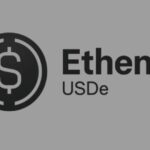With its Digital Interest Token (FDIT), Fidelity moves to challenge BlackRock’s BUIDL fund.
Fidelity’s September 8 unveiling of its Fidelity Digital Interest Token (FDIT) fund is hailed by analysts as a pivotal moment for institutional integration of on-chain assets. This development is seen not only as a direct challenge to BlackRock’s BUIDL fund but also as a significant step in narrowing the chasm between conventional finance and blockchain technology.
FDIT, a tokenized share class of Fidelity’s Treasury money market fund on the Ethereum blockchain, has already attracted over $203.7 million in assets. Since its launch, it has acquired two holders, with the real-world asset (RWA) platform Ondo Finance being the primary investor, according to RWAxyz.
Major Financial Institutions Accelerate Tokenized Fund Adoption as Blockchain Integration Expands
This strategic move highlights an increasing embrace of tokenized funds by major financial institutions as they vie to incorporate blockchain technology into established markets. BlackRock’s BUIDL, which is issued by Securitize and holds a total asset value exceeding $2.2 billion, currently stands as the largest tokenized money market fund.
According to Trevor Koverko, co-founder of Sapien, Fidelity’s entrance into the tokenized funds market indicates a “tipping point.” This is because two of the globe’s largest asset managers now have on-chain products.
Fidelity presently holds $16.4 trillion in assets under administration (AUA), while BlackRock, the world’s largest singular asset manager, oversees approximately $11.55 trillion.
According to Koverko, this development will accelerate mainstream adoption, enhance secondary liquidity, and motivate traditional finance to modernize. He stated that “the rails are shifting from SWIFT to smart contracts, and institutions are coming.” SWIFT is the current dominant messaging network utilized for initiating international financial transactions.
According to Ian De Bode, Chief Strategy Officer at Ondo Finance, on-chain products provide access to benefits “not possible in the legacy system.” These include features such as instant settlement, 24/7 global access, and composability.
Sid Powell, CEO of asset manager Maple Finance, mirrored Koverko’s perspective, noting that Fidelity’s foray into tokenized funds indicates that tokenization is swiftly being established as a fundamental component of financial infrastructure.
Sid Powell states that the fact that major global players are competing here signals that on-chain products are set to define the next phase of capital markets. This competition is driving credibility, liquidity and adoption.
Maple Finance, an on-chain asset manager, observes that tokenized funds truly thrive when they are integrated with lending and yield-generating infrastructure. Powell explained that the entry of these large firms into the space simply confirms the established path, demonstrating that both traditional and crypto-native managers are actively working towards building the same future.
Fidelity’s launch coincides with a significant development from Nasdaq, the world’s second-largest stock exchange, which boasts a market capitalization of nearly $31 trillion. A filing was submitted to the U.S. Securities and Exchange Commission (SEC) on September 8 to facilitate the trading of tokenized equities.
This move has been described as “historic” and, pending regulatory approval, could potentially represent the first instance of tokenized securities being traded on a major U.S. stock exchange.
Hedy Wang, CEO and co-founder of Block Street, explained to The Defiant that this isn’t about retail hype but rather about institutions showing their comfort with blockchain infrastructure. The resulting effect is that liquidity begins to deepen because large players introduce both volume and trust.
Wang clarified that for tokenized assets as a whole, these actions are propelling adoption beyond initial experimentation and into genuine market infrastructure. In her view, “it’s traditional finance at last acknowledging that blockchain is becoming the new settlement layer.”















